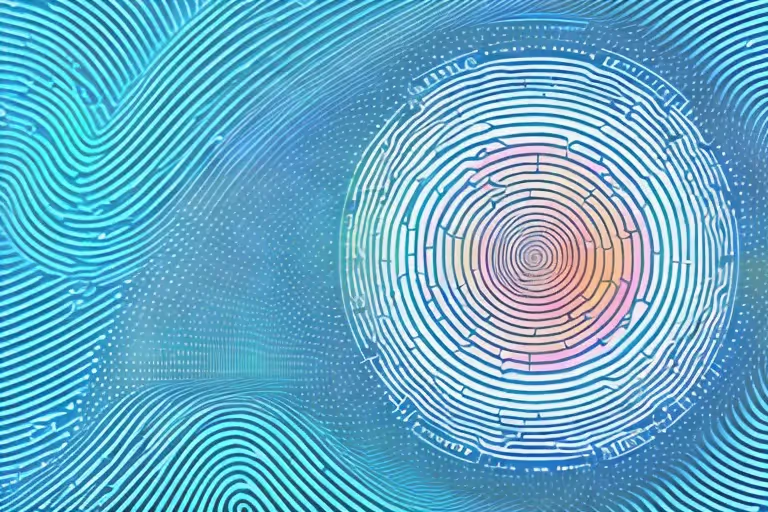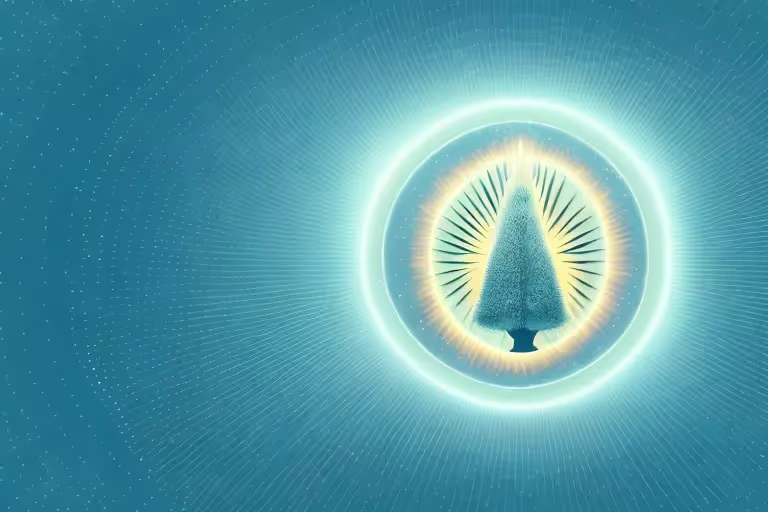Throughout history, humans have been fascinated by the concept of auras. These mysterious energy fields surrounding individuals have captured the imagination of cultures around the world. But what exactly is an aura? Join us as we delve into the depths of aura colors, understanding their significance, and how they reflect our personality and mood. Whether you believe in the metaphysical or lean towards scientific explanations, this exploration of auras will leave you with a newfound appreciation for the colorful world within and around us.
Understanding the Concept of Auras
An aura is an electromagnetic field that surrounds all beings and objects. It is believed to contain information about an individual's physical, emotional, and spiritual state. Auras are composed of a variety of colors, each carrying its own unique meaning and energy. To fully comprehend auras, it is imperative to delve into their history and cultural significance.
What is an Aura?
An aura is essentially an energy field that encompasses our bodies. It is invisible to the naked eye but can be perceived through certain techniques such as Kirlian photography or by individuals with heightened psychic abilities. Auras are said to emanate from energy centers known as chakras, which are located along the spine. These energy centers regulate the flow of energy throughout our body, influencing our physical, mental, and emotional well-being.
When we talk about auras, it is important to understand that they are not just limited to humans. In fact, all living beings, including plants and animals, have their own auras. Each aura is unique and reflects the individual's essence and energy. Just like our fingerprints, no two auras are exactly alike.
One fascinating aspect of auras is the ability to perceive and interpret their colors. Different colors are associated with various emotions, personality traits, and states of being. For example, a bright and vibrant aura may indicate a person who is energetic and positive, while a dull or murky aura may suggest someone who is feeling low or unwell.
Access On-Demand Hypnosis for Any Challenge You're Facing.
Try it Free!
The History and Cultural Significance of Auras
The concept of auras has been present in various cultures throughout history. Ancient Egyptians, for instance, believed that auras were an extension of the soul and used them to determine an individual's divine purpose. They believed that by understanding the colors and patterns of one's aura, they could gain insight into a person's character and destiny.
In Hinduism, auras are closely tied to the concept of prana, or life force energy, and are depicted as vibrant halos surrounding deities. These auras are believed to represent the divine energy and power of the gods and goddesses. The colors of the auras associated with different deities have specific meanings and symbolize their unique attributes and qualities.
Throughout history, auras have also been associated with healing and spiritual practices. In traditional Chinese medicine, for example, practitioners use aura reading techniques to diagnose imbalances in the body's energy system and prescribe appropriate treatments. Similarly, in Reiki, a form of energy healing, practitioners use their hands to sense and manipulate the aura to promote balance and well-being.
Understanding the cultural significance of auras helps us appreciate the diverse perspectives on this mystical phenomenon. It highlights the universal human fascination with energy, spirituality, and the interconnectedness of all things. Exploring the rich history and beliefs surrounding auras allows us to deepen our understanding of ourselves and the world around us.
The Science Behind Aura Colors
While auras have been predominantly associated with metaphysical beliefs, there is a scientific basis for their existence. The electromagnetic field theory proposes that the human body generates electromagnetic energy, which manifests as the aura. Additionally, psychology plays a crucial role in aura perception, as the interpretation of colors is influenced by our emotions and experiences.
The Electromagnetic Field Theory
According to this theory, the human body generates electrical impulses that create a subtle electromagnetic field. This field interacts with the external environment, leading to the formation of the aura. Research has shown that plants, animals, and even inanimate objects emit electromagnetic fields, providing further evidence for the existence of auras.
The Role of Psychology in Aura Perception
Aura perception is intricately connected to our psychological state. Our emotions and experiences influence how we interpret and perceive aura colors. For example, a person experiencing anger may see red hues in the aura of others, while an individual in a state of deep peace may perceive soft shades of blue. This interplay between psychology and aura perception adds depth and complexity to our understanding of aura colors.
The Spectrum of Aura Colors
Now that we have gained insight into the concept of auras and the science behind their existence, let us explore the vibrant spectrum of aura colors and their meanings.
The Significance of Red Auras
Red auras are often associated with passion, energy, and power. Individuals with red auras are seen as adventurous and bold, possessing a strong drive to achieve their goals. However, red auras may also indicate anger or aggression, highlighting the importance of interpreting aura colors within the context of the individual's overall energy and emotional state.
The Meaning Behind Blue Auras
Blue auras are often associated with calmness, serenity, and communication. Those with blue auras are believed to be natural communicators, empathetic listeners, and compassionate individuals. Blue auras signify a harmonious balance between the mind and heart, symbolizing a person's ability to express themselves authentically.
Interpreting Green Auras
Green auras have a strong connection to nature and are often associated with growth, healing, and renewal. Individuals with green auras possess a deep affinity for the environment, often embodying traits such as compassion, patience, and empathy. They are natural healers, offering comfort and support to those in need.
The Power of Purple Auras
Purple auras are often associated with intuition, spirituality, and creativity. Indigo or purple auras can indicate a strong connection to higher realms of consciousness. Those with purple auras are often regarded as deep thinkers, visionaries, and individuals who excel in creative pursuits.
Decoding Yellow and Orange Auras
Yellow and orange auras are linked to positivity, happiness, and joy. These vibrant hues are often seen in individuals who radiate optimism and possess a zest for life. Yellow auras are associated with intellectual pursuits and an eagerness for knowledge, while orange auras symbolize enthusiasm, vitality, and charisma.
Understanding White and Black Auras
White and black auras are considered rare and highly significant. White auras symbolize purity, spiritual awakening, and a deep connection to divine energy. Individuals with white auras are often seen as enlightening figures, spreading wisdom and healing to others. In contrast, black auras represent protection, mystery, and transformation. They can indicate a period of introspection or the need for healing.
How Aura Colors Reflect Your Personality and Mood
Now that we have explored the spectrum of aura colors, let us delve into how these colors reflect our personality traits and emotional states. Understanding the relationship between aura colors and our inner world allows us to gain a deeper understanding of ourselves and the people around us.
Aura Colors and Emotional States
Aura colors can provide valuable insight into an individual's emotional state. For example, a person with a predominantly red aura may be experiencing heightened emotions such as anger or passion. On the other hand, someone with a serene blue aura may be feeling calm and at peace. By recognizing these emotional cues, we can navigate our interactions with others and offer support when needed.
Aura Colors and Personality Traits
Aura colors offer glimpses into an individual's personality traits. Colors such as green may signify a nurturing and compassionate nature, while purple may indicate a deep sense of intuition and creativity. By understanding the characteristics associated with different aura colors, we can appreciate the diverse qualities that make each person unique.
In conclusion, aura colors are a fascinating phenomenon that encompasses both metaphysical and scientific perspectives. Whether you believe in the spiritual aspects of auras or are more inclined towards scientific explanations, exploring the spectrum of aura colors can offer valuable insights into our inner world. By unlocking the meanings behind these vibrant hues, we can gain a deeper understanding of ourselves and the people around us.
Unlock a World of Self-Discovery with the Aura Health App
If you want to dive deeper into the world of aura colors and understand their impact on your well-being, the Aura Health App is your perfect companion. This powerful app provides an interactive platform where you can explore the meanings behind different aura colors, receive personalized insights, and embark on a journey of self-discovery. Discover the nuances of your aura and gain valuable knowledge to enhance your personal growth and well-being. Download the Aura Health App today and unlock a world of self-discovery and enlightenment.
Aura is Your All In One App for Meditation, Mindfulness Wellbeing
Find peace every day with one app for your whole well-being. There is no one-size-fits-all solution to mental well-being. Aura is the first all-in-one wellness app that learns how to best help you. Discover an endless library of expert-created tracks for your well-being, all taught by the world’s best coaches, therapists, and storytellers. With Aura's personalized recommendations, you can find peace every morning, day and night.



.webp)






.avif)

%20(1).avif)


.avif)
.avif)
.webp)


.avif)


















































































































.avif)

















.svg)









